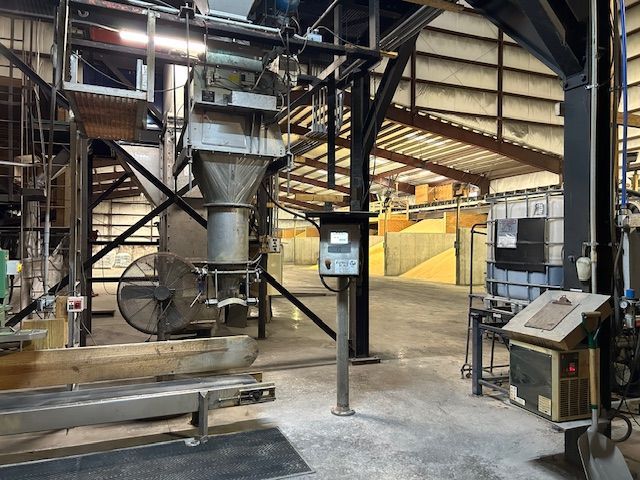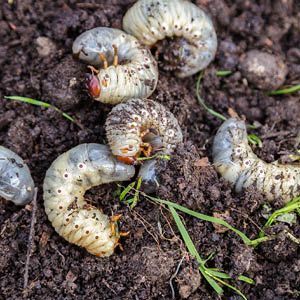List of Services
-
Environmental Protection AgencyList Item 1
POSITION
“The draft human health risk assessment concludes that glyphosate is not likely to be carcinogenic to humans. The Agency’s assessment found no other meaningful risks to human health when the product is used according to the pesticide label. The Agency’s scientific findings are consistent with the conclusions of science reviews by a number of other countries as well as the 2017 National Institute of Health Agricultural Health Survey.”
Resource:
https://www.epa.gov/pesticides/epa-releases-draft-risk-assessments-glyphosate
-
National Pesticide Information CenterList Item 2
POSITION
Is glyphosate likely to contribute to the development of cancer?
"When high doses were administered to laboratory animals, some studies suggest that glyphosate has carcinogenic potential. Studies on cancer rates in people have provided conflicting results on whether the use of glyphosate containing products is associated with cancer. Some studies have associated glyphosate use with non-Hodgkin lymphoma.
Has anyone studied non-cancer effects from long-term exposure to glyphosate?
Glyphosate exposure has been linked to developmental and reproductive effects at high doses that were administered to rats repeatedly during pregnancy. These doses made the mother rats sick. The rat fetuses gained weight more slowly, and some fetuses had skeletal defects. These effects were not observed at lower doses. No information was found linking exposure to glyphosate with asthma or other diseases.
Are children more sensitive to glyphosate than adults?
While children may be especially sensitive to pesticidescompared to adults, there are currently no data showing that children have increased sensitivity specifically to glyphosate.”
Resource:
http://npic.orst.edu/factsheets/glyphogen.html#cancer
-
Canada Pest Management Regulatory AgencyList Item 3
POSITION
“The overall finding from the re-examination of glyphosate is highlighted as follows:
Glyphosate is not genotoxic and is unlikely to pose a human cancer risk.
Dietary (food and drinking water) exposure associated with the use of glyphosate is not expected to pose a risk of concern to human health.
Occupational and residential risks associated with the use of glyphosate are not of concern, provided that updated label instructions are followed.
The environmental assessment concluded that spray buffer zones are necessary to mitigate potential risks to non-target species (for example, vegetation near treated areas, aquatic invertebrates and fish) from spray drift.
When used according to revised label directions, glyphosate products are not expected to pose risks of concern to the environment.
All registered glyphosate uses have value for weed control in agriculture and non-agricultural land management”
Resource:
https://www.canada.ca/en/health-canada/services/consumer-product-safety/reports-publications/pesticides-pest-management/decisions-updates/registration-decision/2017/glyphosate-rvd-2017-01.html#a1
-
German Federal Institute for Risk AssessmentList Item 4
POSITION
“The pesticide active ingredient glyphosate has been evaluated by the authorities responsible for the health assessment in national, European and other international institutions, including the WHO / FAO Joint Meeting on Pesticide Residues (JMPR). After considering all available studies, [glyphosate is] not causing cancer. This risk is derived from three epidemiological studies from the USA, Canada and Sweden. However, this assessment has not been confirmed in a large cohort of well-cited “Agricultural Health Study” and other studies. In the current report of the BfR (German Federal Institute for Risk Assessment) in the EU, over 30 epidemiological studies were evaluated. In the overall assessment, there was no validated relationship between Glyphosate exposure and an increased risk of Non-Hodgkin lymphoma or other cancers.”
Resource:
https://geneticliteracyproject.org/2015/03/24/german-agency-says-iarc-glyphosate-decision-based-on-poor-evidence/
-
World Health Organization’s International Agency for Research on Cancer
POSITION
[As it pertains to glyphosate in drinking water and likelihood of causing different kinds of cancer in human tissues]…
“Because of [glyphosate’s] low toxicity, the health-based value derived for AMPA alone orin combination with glyphosate is orders of magnitude higher than concentrations of glyphosate or AMPA normally found in drinking-water. Under usual conditions, therefore, the presence of glyphosate and AMPA in drinking-water does not represent a hazard to human health. For this reason, the establishment of a formal guideline value for glyphosate and AMPA is not deemed necessary.”
Resource:
http://www.who.int/water_sanitation_health/water-quality/guidelines/chemicals/glyphosate-fs-2017.pdf?ua=1
EVALUATION
6.1 Cancer in humans
There is limited evidence in humans for the carcinogenicity of glyphosate. A positive association has been observed for non-Hodgkin lymphoma.
6.2 Cancer in experimental animals
There is sufficient evidence in experimental animals for the carcinogenicity of glyphosate.
6.3 Overall evaluation
Glyphosate is probably carcinogenic tohumans (Group 2A).
6.4 Rationale
In making this overall evaluation, the Working Group noted that the mechanistic and other relevant data support the classification of glyphosate in Group 2A. In addition to limited evidence for the carcinogenicity of glyphosate in humans and sufficient evidence for the carcinogenicity of glyphosate in experimental animals, there is strong evidence that glyphosate can operate through two key characteristics of known human carcinogens, and that these can be operative in humans.
Specifically
There is strong evidence that exposure to glyphosate or glyphosate-based formulations is genotoxic based on studies in humans in vitro and studies in experimental animals.”
Resource:
https://monographs.iarc.fr/wp-content/uploads/2018/06/mono112-10.pdf
-
European Chemicals Agency
POSITION
“RAC assessed glyphosate’s hazardousness against the criteria in the Classification, Labelling and Packaging Regulation. They considered extensive scientific data in coming to their opinion. The committee concluded that the scientific evidence available at the moment warrants the following classifications for glyphosate according to the CLP Regulation:
Eye Damage 1; H318 (Causes serious eye damage)
Aquatic Chronic 2; H411 (Toxic to aquatic life with long lasting effects)
RAC concluded that the available scientific evidence did not meet the criteria in the CLP Regulation to classify glyphosate for specific target organ toxicity, or as a carcinogen, as a mutagen or for reproductive toxicity.”
Resource:
https://echa.europa.eu/-/glyphosate-not-classified-as-a-carcinogen-by-echa
- Avoid contact with eyes or clothing.
- Wear personal protective clothing (wear long-sleeve shirts, pants, socks and shoes).
- Wash hands thoroughly before eating or drinking
- Pets: glyphosate is generally non-toxic to dogs, cats, and most domestic animals, however ingestion may lead to mild gastrointestinal irritation. If swallowed provide animal with adequate drinking water and consult a veterinarian if symptoms persist more than 24 hours
- Keep container stored away from water, food, feed, or seed. Avoid spills and surface contamination.
Turf Care Supply - TurfReport Blog







